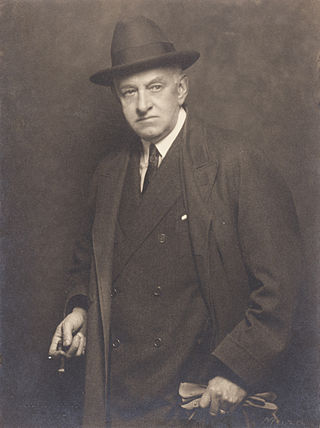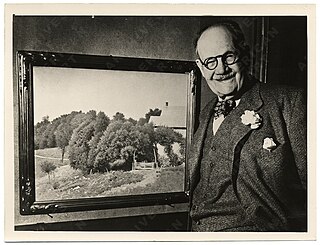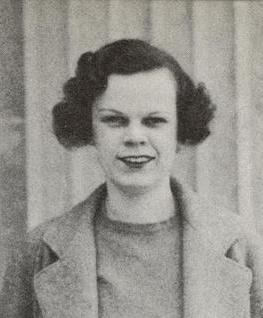Related Research Articles

Old Lyme is a coastal town in New London County, Connecticut, United States, bounded on the west by the Connecticut River, on the south by the Long Island Sound, on the east by the town of East Lyme, and on the north by the town of Lyme. The town is part of the Lower Connecticut River Valley Planning Region.

Willard Leroy Metcalf was an American painter born in Lowell, Massachusetts. He studied at the School of the Museum of Fine Arts, Boston, and later attended Académie Julian, Paris. After early figure-painting and illustration, he became prominent as a landscape painter. He was one of the Ten American Painters who in 1897 seceded from the Society of American Artists. For some years he was an instructor in the Women's Art School, Cooper Union, New York, and in the Art Students League, New York. In 1893 he became a member of the American Watercolor Society, New York. Generally associated with American Impressionism, he is also remembered for his New England landscapes and involvement with the Old Lyme Art Colony at Old Lyme, Connecticut and his influential years at the Cornish Art Colony.
Florence Ann Griswold was a resident of Old Lyme, Connecticut, United States who became the nucleus of the "Old Lyme Art Colony" in the early 20th century. Her home has since been made into the Florence Griswold Museum, a National Historic Landmark.

Henry Ward Ranger was an American artist. Born in western New York State, he was a prominent landscape and marine painter, an important Tonalist, and the leader of the Old Lyme Art Colony. Ranger became a National Academician (1906), and a member of the American Water Color Society. Among his paintings are, Top of the Hill, Corcoran Gallery of Art, Washington, D.C.; and East River Idyll, Carnegie Institute, Pittsburgh, Pennsylvania.

Bessie Potter Vonnoh was an American sculptor best known for her small bronzes, mostly of domestic scenes, and for her garden fountains. Her stated artistic objective, as she told an interviewer in 1925, was to “look for beauty in the everyday world, to catch the joy and swing of modern American life.”

Frank Vincent DuMond was one of the most influential teacher-painters in 20th-century America. He was an illustrator and American Impressionist painter of portraits and landscapes, and a prominent teacher who instructed thousands of art students throughout a career spanning over fifty years.

The Florence Griswold Museum is an art museum at 96 Lyme Street in Old Lyme, Connecticut centered on the home of Florence Griswold (1850–1937), which was the center of the Old Lyme Art Colony, a main nexus of American Impressionism. The museum is noted for its collection of American Impressionist paintings. The house was designated a National Historic Landmark in 1993. The site encompasses 12-acres of historic buildings, grounds, gardens, and walking trails.
Edward Charles Volkert (1871–1935) was an American Impressionist artist best known for his colorful and richly painted impressionist landscapes. His trademark subject was that of cattle and plowmen. His style is noted for its impressionist use of light, applied in small dots of paint, while maintaining an interest in the true forms and colors of his subject matter. He has been referred to as America's cattle painter extraordinaire".

Clark Greenwood Voorhees was an American Impressionist and Tonalist landscape painter and one of the founders of the Old Lyme Art Colony.

Edith Woodman Burroughs was an American sculptor. Her work was included in the 1913 Armory Show.

Matilda Browne was an American Impressionist artist noted for her flower paintings and her farm and cattle scenes. Born in Newark, New Jersey, she was a child prodigy who received early art training from her artist-neighbor, Thomas Moran.

Allen Butler Talcott was an American landscape painter. After studying art in Paris for three years at Académie Julian, he returned to the United States, becoming one of the first members of the Old Lyme Art Colony in Connecticut. His paintings, usually landscapes depicting the local scenery and often executed en plein air, were generally Barbizon and Tonalist, sometimes incorporating elements of Impressionism. He was especially known and respected for his paintings of trees. After eight summers at Old Lyme, he died there at the age of 41.
Florence Koehler was an American craftswoman, designer and jeweler. She was one of the best-known jewelers of the Arts and Crafts movement that flourished in the late 19th and early 20th centuries.

Florence Mellowes Montgomery was an American museologist, art historian, and curator, specializing in textiles. She authored two influential books and worked as a curator at Winterthur Museum, Garden and Library. She was married to Charles F. Montgomery, a fellow curator and art historian who was Winterthur Museum's first director.
Mary Lightfoot Tarleton Knollenberg was an American sculptor.
Lydia Eastwick Longacre was an American painter known especially for her portrait miniatures.
Breta Longacre, later Del Mar, was an American painter.
Katherine Langhorne Adams (1885–1977) was an American painter and printmaker. Other sources give her birthdate as c. 1882 or 1890.
Louis Paul Dessar was an American painter. He painted the portraits of New York City's high society as well as Connecticut's farmers.
Mary Way was an American painter, known for her portrait miniatures. She, along with her sister Elizabeth Way Champlain, was among the first women to work as a professional artist in the United States.
References
- ↑ "Paxson, Ethel". Benezit Dictionary of Artists. doi:10.1093/benz/9780199773787.article.b00137384 . Retrieved 20 November 2024.
- ↑ "Ethel Easton Paxson - Biography". AskArt. Retrieved 20 November 2024.
- ↑ "A Finding Aid to the Ethel Paxson papers, 1903-1985". Archives of American Art. Smithsonian Institution. Retrieved 20 November 2024.
- 1 2 "Ethel Paxson". Florence Griswold Museum. Retrieved 20 November 2024.
- ↑ "Ethel Paxson | Public Market—Rio de Janeiro | American". The Metropolitan Museum of Art. Retrieved 20 November 2024.